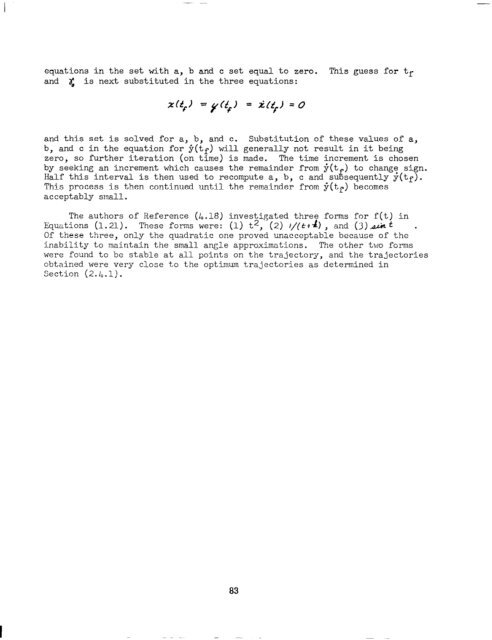guidance, flight mechanics and trajectory optimization
guidance, flight mechanics and trajectory optimization
guidance, flight mechanics and trajectory optimization
Create successful ePaper yourself
Turn your PDF publications into a flip-book with our unique Google optimized e-Paper software.
equations in the set with a, b <strong>and</strong> c set equal to zero. This guess for tf<br />
<strong>and</strong> d', is next substituted in the three equations:<br />
<strong>and</strong> this set is solved for a, b, <strong>and</strong> c. Substitution of these values of a,<br />
b, <strong>and</strong> c in the equation for y(tf) will generally not result in it being<br />
zero, so further iteration (on time) is made. The time increment is chosen<br />
by seeking an increment which causes the remainder from $(t g ) to change sign.<br />
Half this interval is then used to recompute a, b, c <strong>and</strong> su sequently y(tf).<br />
This process is then continued until the remainder from y(tf) becomes<br />
acceptably small.<br />
The authors of Reference (4.18) investigated three forms for f(t) in<br />
Equations (1.21). These forms were: (1) t2, (2) //(ttd), <strong>and</strong> (3)&t .<br />
Of these three, only the quadratic one proved unacceptable because of the<br />
inability to maintain the small angle approximations. The other two forms<br />
were found to be stable at all points on the <strong>trajectory</strong>, <strong>and</strong> the trajectories<br />
obtained were very close to the optimum trajectories as determined in<br />
Section (2.4.1).<br />
83
















